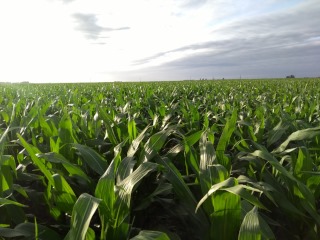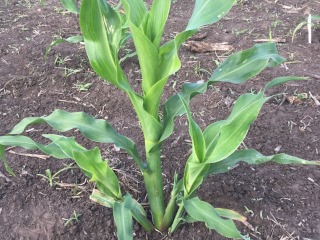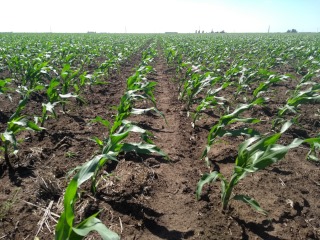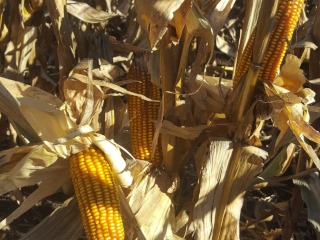By Hayley Crowell
Undeniably, corn is one of the world’s most important crops. From feeding humans and livestock, to its many industrial uses, humans have been growing it for approximately 10,000 years.

A common farming practice in less productive regions is increasing the space between the corn plants in the row. The space between plants is called plant density. With lowered plant density, there is less competition between the corn for water, nutrients, and other resources needed. However, greater access to nutrients can cause the corn to grow an additional component: tillers.
Did you know that corn is technically a member of the grass family? Like other grasses, corn can grow tillers, a branching structure naturally found at the base of a corn plant. Tillers require nutrients to grow. As a result, they can be seen as a nuisance by stealing nutrients from the most important part of the plant: the main ear of corn! Understanding how tillers affect corn yields in less productive regions is crucial.

This study aimed to assess the role of tillers on corn planted at a lower density,” Massigoge states. How does the presence of tillers impact corn yield in varied environments in the Pampas? What are the relationships between tillers, environment, and corn yield? These were all questions the team worked to answer.

The researchers set up 11 field experiments during two years in the southern Argentinian Pampas. Researchers collected data from corn with and without tillers at 11 locations with varying sunlight, rainfall, and temperatures. For the corn being studied without tillers, the researchers had to remove the tillers by hand. This type of research is hard work!
Data such as plant density, ears of corn per plant, tillers per plant, and corn yield were collected and evaluated. Gathering this data led to some exciting results: in a wide range of environments, tillers either maintained or increased corn yield compared to corn without tillers.

Lower planting density is beneficial in restrictive environments like the Pampas region. Reducing plant density decreases water use and increases water availability, so one of the main challenges for corn under these conditions is to maximize the use of resources. This study proved that tillers could help maximize the corn’s use of its resources and adapt to the environment, when environmental conditions are better than expected.
This research is important to Massigoge and his team. “Historically, most of the research on corn crops has focused on high-yielding environments. Recommendations for less productive regions are less advanced, so applied research that can help to stabilize and/or maximize corn yield will cause a significant impact on production.”
Click here to see more...